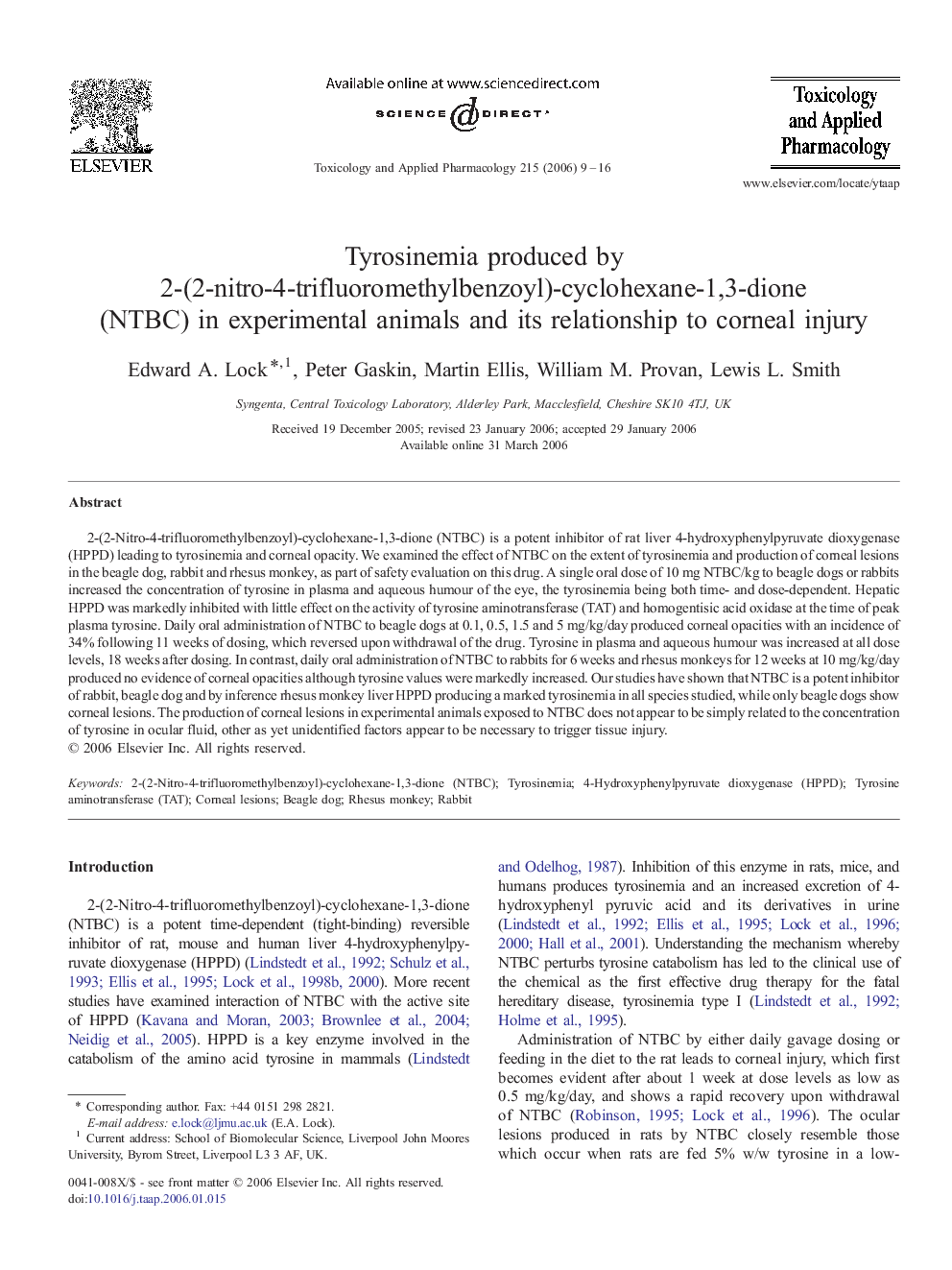| کد مقاله | کد نشریه | سال انتشار | مقاله انگلیسی | نسخه تمام متن |
|---|---|---|---|---|
| 2571268 | 1128625 | 2006 | 8 صفحه PDF | دانلود رایگان |

2-(2-Nitro-4-trifluoromethylbenzoyl)-cyclohexane-1,3-dione (NTBC) is a potent inhibitor of rat liver 4-hydroxyphenylpyruvate dioxygenase (HPPD) leading to tyrosinemia and corneal opacity. We examined the effect of NTBC on the extent of tyrosinemia and production of corneal lesions in the beagle dog, rabbit and rhesus monkey, as part of safety evaluation on this drug. A single oral dose of 10 mg NTBC/kg to beagle dogs or rabbits increased the concentration of tyrosine in plasma and aqueous humour of the eye, the tyrosinemia being both time- and dose-dependent. Hepatic HPPD was markedly inhibited with little effect on the activity of tyrosine aminotransferase (TAT) and homogentisic acid oxidase at the time of peak plasma tyrosine. Daily oral administration of NTBC to beagle dogs at 0.1, 0.5, 1.5 and 5 mg/kg/day produced corneal opacities with an incidence of 34% following 11 weeks of dosing, which reversed upon withdrawal of the drug. Tyrosine in plasma and aqueous humour was increased at all dose levels, 18 weeks after dosing. In contrast, daily oral administration of NTBC to rabbits for 6 weeks and rhesus monkeys for 12 weeks at 10 mg/kg/day produced no evidence of corneal opacities although tyrosine values were markedly increased. Our studies have shown that NTBC is a potent inhibitor of rabbit, beagle dog and by inference rhesus monkey liver HPPD producing a marked tyrosinemia in all species studied, while only beagle dogs show corneal lesions. The production of corneal lesions in experimental animals exposed to NTBC does not appear to be simply related to the concentration of tyrosine in ocular fluid, other as yet unidentified factors appear to be necessary to trigger tissue injury.
Journal: Toxicology and Applied Pharmacology - Volume 215, Issue 1, 15 August 2006, Pages 9–16